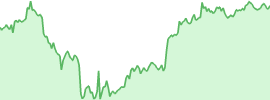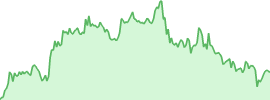Bitcoin’s grip on the market is loosening and for many crypto observers, the question is shifting: will altcoins reclaim the spotlight? New data suggests that momentum may already be moving.
Sometimes you wake up to see a new landscape. What once felt like Bitcoin’s unassailable dominance now resembles a tightrope: every dip invites whispers of change.
You don’t need to be a technical analyst to sense it; crypto coin prices are shifting underfoot. Current figures from Binance Research show that Bitcoin dominance has declined to roughly 60.6% (as of July 2025) and dropped to 57.3% in August, reflecting a notable weakening.
That decline isn’t happening in isolation. It is unfolding alongside surges in altcoins. In the same August reports, Ethereum climbed 18.6% and Solana gained 15.5%, marking some of the strongest monthly moves in the top 10. The shift may be subtle, but it reflects money probing beyond the safety of Bitcoin into alternative assets.
When You Watch Dominance, You Read Sentiment
Bitcoin dominance, often referred to as BTC.D, is more than another market metric; it’s a shorthand for investor confidence. If dominance shrinks, capital is bleeding outward into other coins.
Current data shows Bitcoin dominance hovering in the 58 to 59% range, a level that observers have suggested correlates with increased attention to altcoins in past cycles. A recent charting of Bitcoin dominance shows a ‘death cross’ pattern, where the 50-day moving average falls below the 200-day moving average, a technical signal that often corresponds to weakening momentum in traditional market analysis.
David Princay, President of Binance France, cautioned that many large players still see Bitcoin as their anchor: “We continue to see strong interest in crypto from institutional investors and corporate treasuries (and even from sovereign wealth funds) and naturally their primary interest is in Bitcoin as the most established cryptoasset.”
That kind of institutional weight could slow a wholesale rotation, but doesn’t rule out capital flowing into altcoins.
The Altcoin Season Index
If dominance suggests where money might be heading, the Altcoin Season Index tries to measure whether it is already happening. The index defines an “altcoin season” as 75% of the top coins outperform Bitcoin over 90 days. In recent readings, the index sat in the low 30s.
That’s far from a full-blown altseason, but inflows are building elsewhere. Some narratives indicate that altcoin stores on exchanges could be nearing multi-month tops as capital seems to be testing beyond Bitcoin. Publicly available Binance Research outputs do not yet contain a verified ‘18-month high’ value for altcoin stores on exchanges.
Yi He, Co-founder of Binance, captured the momentum with a broader view: “Crypto isn’t just the future of finance – it’s already reshaping the system, one day at a time.” In that sense, the rise of altcoins is less about timing a season and more about watching a maturing ecosystem flex its diversity.
Liquidity Waiting in the Wings
Liquidity is the hidden fuel behind rotation. Based on aggregated exchange data reported in September 2025, stablecoin reserves currently sitting on exchanges are estimated at around $31 billion. Those reserves are like dry powder, capital waiting to be deployed.
Richard Teng, the company’s CEO, described the readiness of global markets this way: “Global adoption often starts with a single domino. Now that crypto is being recognised as a legitimate financial instrument within one of the world’s largest retirement systems, the question is no longer what, but when.” The implication is clear: if one major domino falls, the stablecoin liquidity on the sidelines is positioned to rush in.
The Past Isn’t a Guarantee, But It’s a Map
Looking backwards, altcoin seasons have been dramatic. Bitcoin's dominance relinquished over half of what it had before in previous cycles, falling from above 80% to about 37%. This coincided with several of the strongest surges in Ethereum, Ripple and other altcoins. The rotation was usually sequential: capital moved from BTC into ETH and then fanned out into other projects.
This time, new variables complicate the map. Exchange-traded products, staking incentives and clearer institutional frameworks shape how capital moves.
At the same time, despite some outflows, Ethereum ETFs still hold more than $12 billion in assets under management. The presence of these vehicles means the rotation could be deeper and more sustained than in prior cycles.
What You Should Watch (Without Acting)
For many market watchers, three signals are worth tracking. Historically, when Bitcoin dominance dips below roughly 58 to 60%, altcoins often attract more capital, though outcomes vary with broader conditions. Second, the Altcoin Season Index moving higher typically points to broad altcoin strength. Third, shrinking stablecoin reserves on exchanges can suggest capital deployment into the market rather than sitting idle.
None of this is a certainty. Macro conditions, regulatory updates and shifts in investor psychology can flip the script quickly. A risk-off shock might send funds back to Bitcoin, restoring its dominance. But the pieces are in place for change.
You don’t have to buy into the hype of “altseason” to see what is happening. When dominance slips, liquidity builds and institutional money adapts, the question is less about possibility and more about timing. The coming weeks could determine whether this shift becomes a quiet reshuffling or a market-wide roar.





 usdt
usdt bnb
bnb

